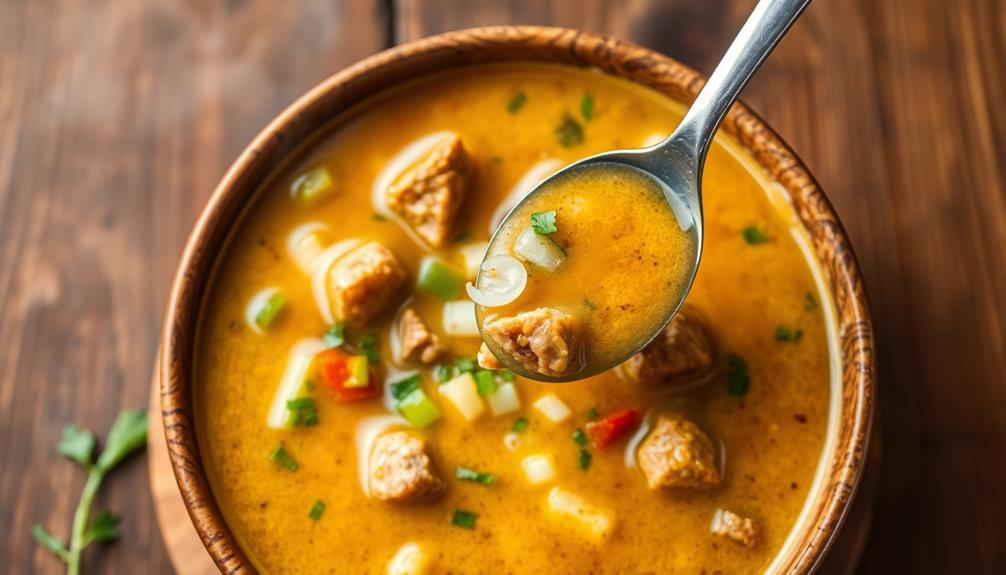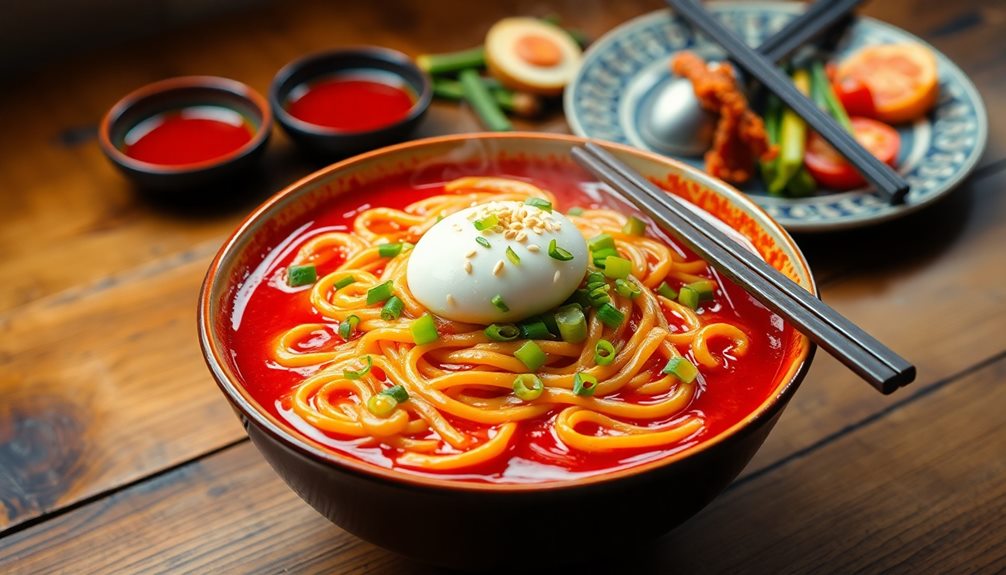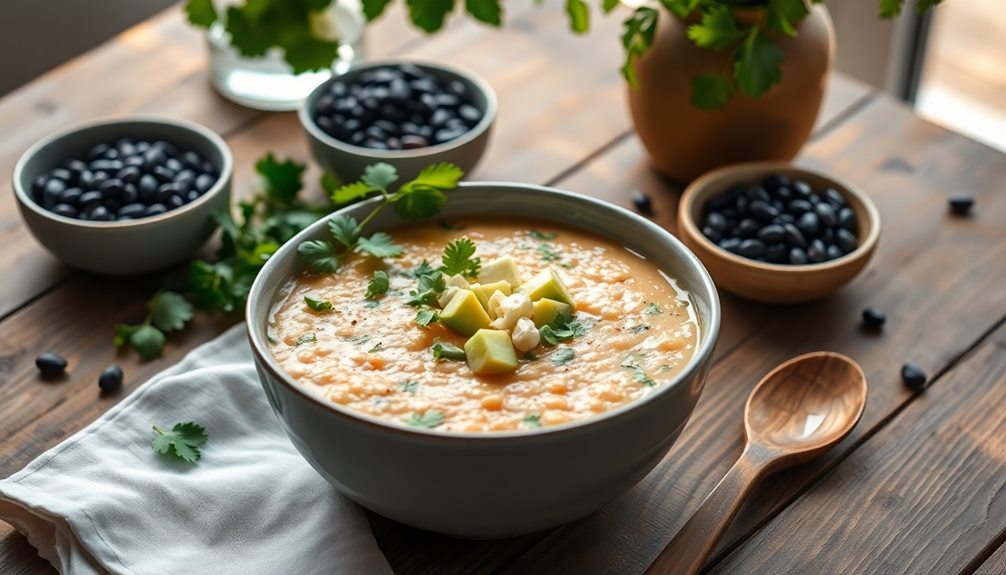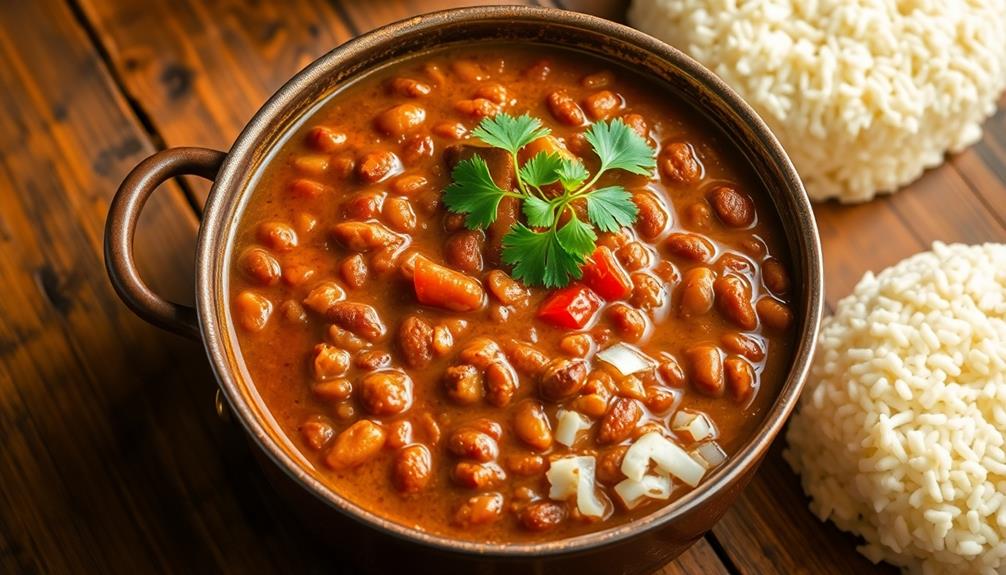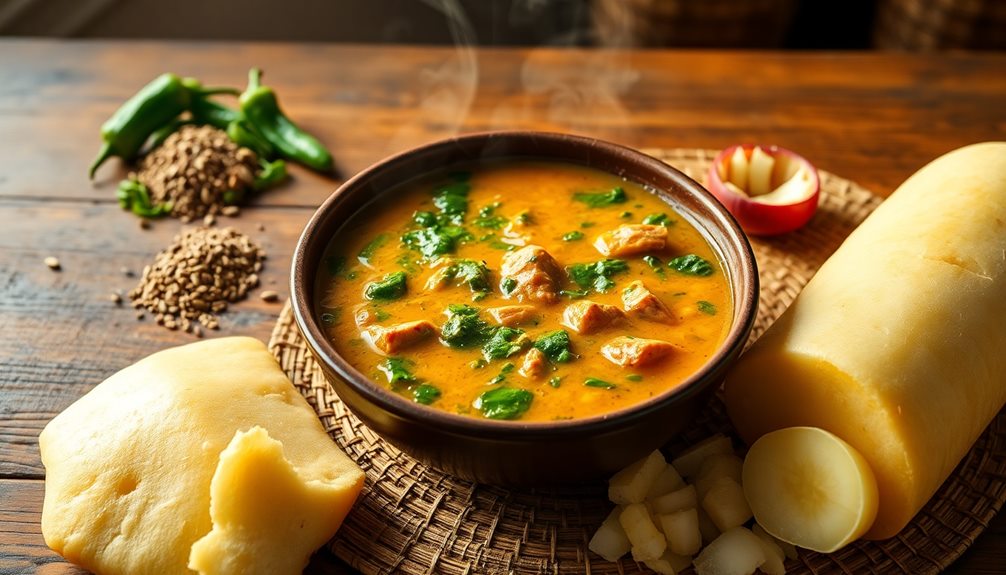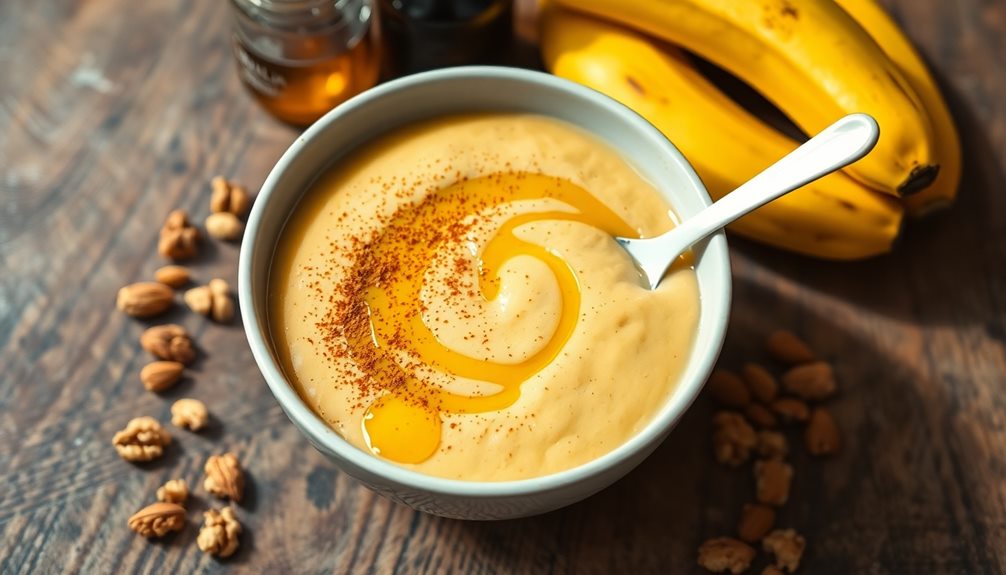Creamy Gbegiri Soup is a beloved Nigerian classic that's been passed down for generations. This comforting dish originates from the Yoruba people and features a rich, velvety base made from blended beans. The key ingredient, gbegiri beans, are a staple in West African cuisine. Simmered in aromatic palm oil, the soup is often served with rice or pounded yam, providing a hearty and nourishing meal. Gbegiri soup is a cherished part of Nigerian culture, representing warmth, hospitality, and the joy of family gatherings. Its creamy goodness will transport you to the heart of Nigerian cuisine, and there's much more to discover about this delightful dish.
Key Takeaways
- Gbegiri soup is a traditional Nigerian dish originating from the Yoruba people, known for its rich, creamy texture and comforting flavors.
- The key ingredient, gbegiri beans, are a type of cowpea cultivated in West Africa and are a staple in Yoruba cuisine.
- Gbegiri soup is a beloved part of Yoruba culture, often served during special occasions and family gatherings, symbolizing hospitality and warmth.
- The dish is typically made by soaking, peeling, and grinding the beans into a smooth paste, then simmering it with palm oil, onions, and spices.
- Creamy Gbegiri soup is high in protein, fiber, and healthy fats, making it a nourishing and satisfying meal option.
History
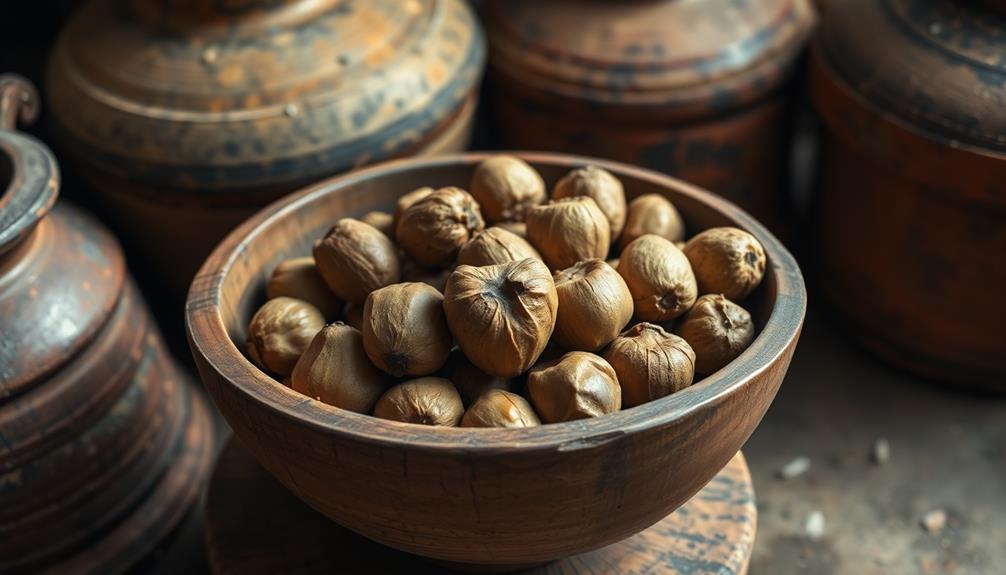
Gbegiri soup has long been a staple in West African cuisine, tracing its roots to the Yoruba people of Nigeria. This hearty, creamy delight has been nourishing families for generations, passed down through the ages. The key ingredient, the gbegiri bean, is a type of cowpea that's been cultivated in the region for centuries.
Traditionally, the beans are soaked, peeled, and then ground into a smooth paste. This paste is then simmered with onions, spices, and sometimes smoked fish or meat, creating a rich, flavorful broth. The resulting soup is thick, velvety, and deeply satisfying, often served alongside staples like eba or rice.
Gbegiri soup has become a beloved part of Yoruba culture, gracing tables during special occasions and family gatherings. The aroma of the simmering pot is sure to bring back cherished memories and warm the hearts of all who partake in this comforting classic.
Recipe
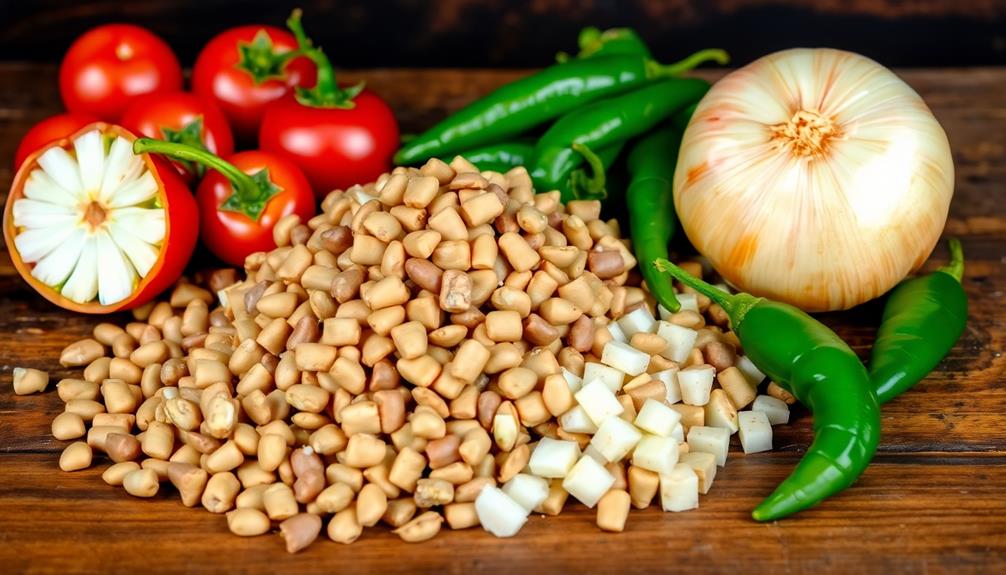
Gbegiri is a creamy, aromatic soup that originated from the Yoruba people of West Africa. It's a versatile dish that can be served as a main course or a side, and is often enjoyed with staple foods like eba, amala, or rice.
This recipe for Creamy Gbegiri Soup features a rich and velvety texture, achieved by blending the main ingredient, the African locust bean, with a variety of spices and seasonings. The result is a comforting and flavorful dish that's sure to delight your taste buds.
- 1 cup dried African locust beans (iru)
- 1 large onion, diced
- 2 tomatoes, diced
- 2 scotch bonnet peppers, minced
- 2 cups palm oil
- 1 teaspoon ground crayfish
- 1 teaspoon ground melon seeds (egusi)
- 1 teaspoon dried ground shrimp
- 1 teaspoon salt
- 1 cube chicken or vegetable bouillon
In a large pot, soak the dried African locust beans in water for at least 6 hours or overnight. Drain the beans and blend them into a smooth paste.
In the same pot, heat the palm oil over medium heat. Add the diced onion and sauté until translucent. Then, add the blended locust bean paste, diced tomatoes, minced scotch bonnet peppers, ground crayfish, ground melon seeds, dried ground shrimp, salt, and the bouillon cube.
Stir the mixture well and let it simmer for 15-20 minutes, stirring occasionally, until the soup has thickened to your desired consistency.
When serving, Creamy Gbegiri Soup can be accompanied by a variety of staple foods, such as eba, amala, or rice. Additionally, you can garnish the soup with extra ground crayfish, chopped onions, or fresh parsley for an extra burst of flavor.
Cooking Steps
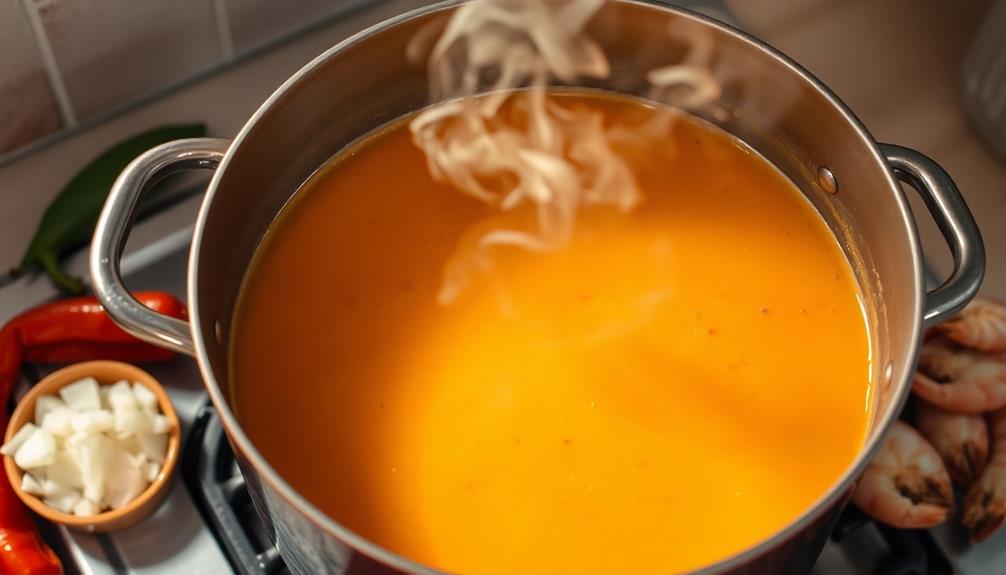
First, you'll need to soak the beans in water overnight.
Drain and rinse them well the next day.
Then, simply blend the soaked beans until smooth.
Next, add some palm oil and let it all simmer together for a bit.
That's the start of your delicious Gbegiri soup!
Step 1. Soak Beans in Water Overnight
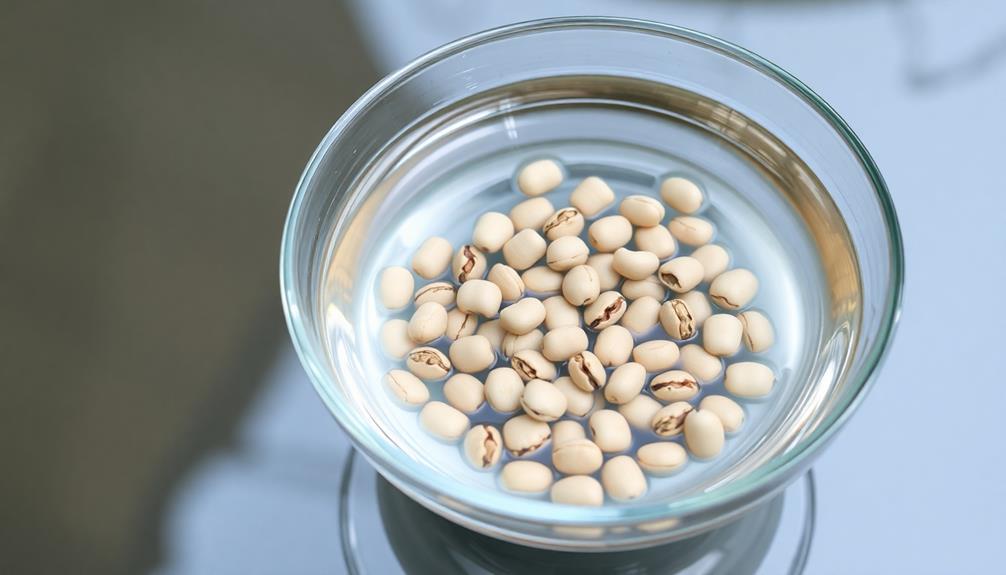
Before you can start cooking the Gbegiri soup, you'll need to soak the beans in water overnight. This step is crucial for softening the beans and making them easier to blend into a smooth, creamy texture.
Here's what you'll do: Take your dried black-eyed peas or brown beans and place them in a large bowl. Cover the beans with plenty of water, making sure they're fully submerged.
Then, simply let them soak overnight, for at least 8 hours. This allows the beans to absorb the water, expand, and become more tender.
When you're ready to continue the recipe the next day, drain the soaked beans and give them a quick rinse. You're all set to move on to the next step in creating your delicious Gbegiri soup!
The overnight soak is an essential part of the process, so don't skip this important preparation.
Step 2. Drain and Rinse the Beans
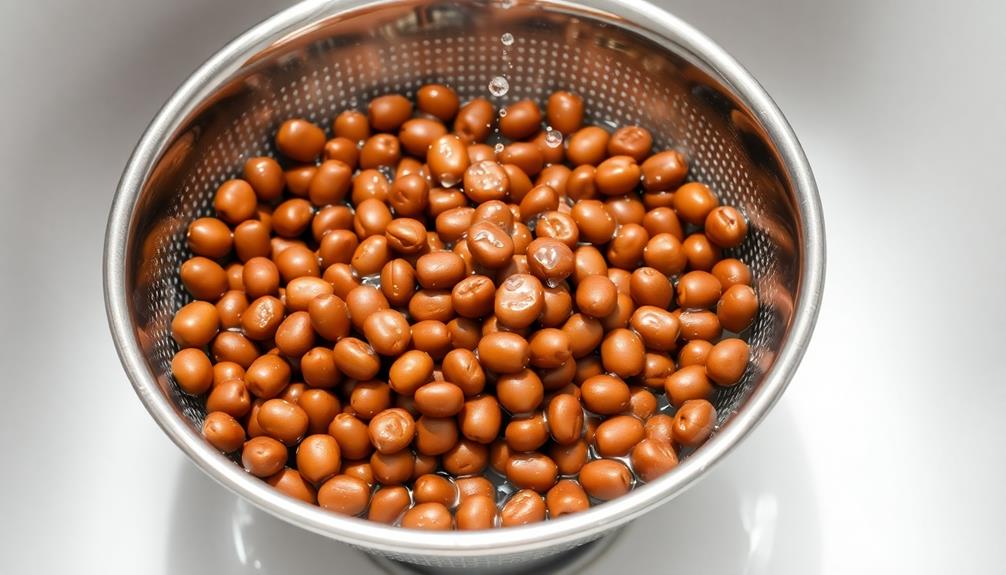
After letting the beans soak overnight, you'll want to drain and rinse them before proceeding with the recipe. This step is crucial to ensure your Gbegiri soup turns out creamy and delicious.
First, grab a colander and place it in the sink. Carefully pour the soaked beans into the colander, allowing the water to drain out. Give the beans a gentle rinse under cool, running water, gently stirring them with your hands to remove any excess starch or impurities.
This simple step of draining and rinsing the beans helps to create a smooth, velvety texture in the final soup. It also removes any bitter or unpleasant flavors that could develop from the overnight soaking.
Once the beans are rinsed, you're ready to move on to the next step in crafting your comforting Gbegiri masterpiece!
Step 3. Blend the Soaked Beans

With the beans drained and rinsed, you'll want to blend them into a smooth, creamy purée. This is the key to achieving that signature velvety texture in your Gbegiri soup.
Grab your trusty blender and add the soaked beans. Blitz them on high speed until they become a luscious, uniform mixture. Don't be afraid to blend for a minute or two – you want that impeccably smooth consistency.
Once the beans are perfectly pureed, transfer the creamy mixture to a bowl. This flavorful base is the foundation of your comforting Gbegiri soup.
Resist the urge to skip this step – the blended beans are what'll give your dish its trademark richness and creaminess. With just a few simple whirls of the blender, you're well on your way to recreating the authentic flavors of this beloved Nigerian classic.
Get ready for a soup that's as nourishing as it's delightful!
Step 4. Add Palm Oil

To prepare the Gbegiri soup, you'll need to add palm oil. This is a crucial step that brings the dish together.
Grab your trusty pan and pour in a couple of tablespoons of vibrant palm oil. It's time to let that oil heat up over medium heat. As the oil warms, you'll start to smell the aroma of the palm fruit – it's simply mouthwatering!
Now, it's time to add the blended beans. Carefully pour the creamy, smooth puree into the hot oil. Be ready for a sizzle! Stir the mixture gently, making sure the beans and oil combine perfectly.
The palm oil will enrich the texture, creating a luscious, velvety base for your Gbegiri soup. Keep stirring and let the flavors meld together. The oil will help the beans release their natural sweetness and nutty notes.
In just a few minutes, you'll have a beautifully golden, fragrant soup, ready to delight your family and friends.
Step 5. Simmer the Blended Beans and Oil
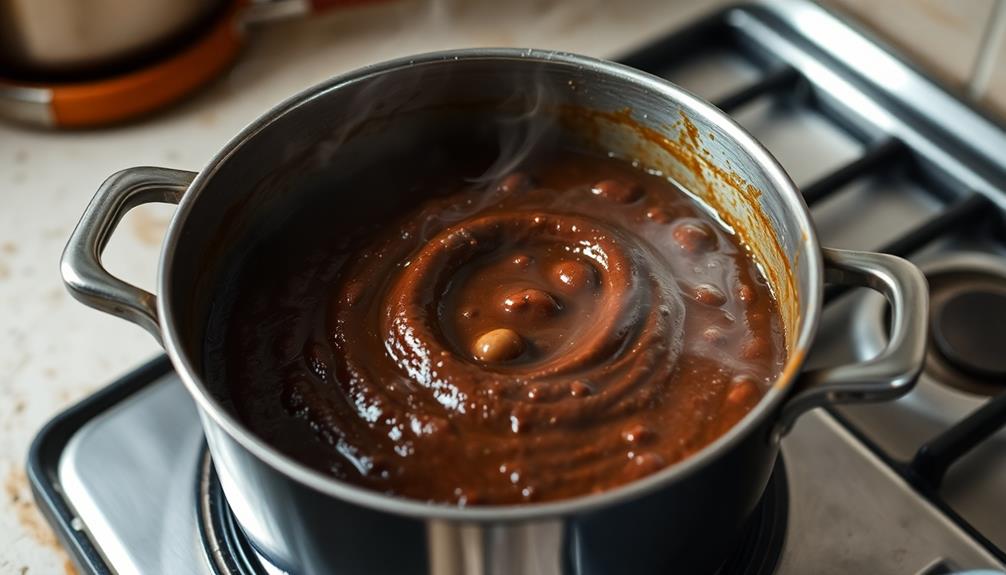
Now that the beans and palm oil are combined, let's simmer the mixture.
Bring the blended beans and oil to a gentle simmer over medium heat. As the pot heats up, you'll notice the mixture start to thicken and develop a rich, creamy texture. Stir the pot occasionally to prevent sticking or burning.
Let the gbegiri simmer for about 15-20 minutes, until it reaches your desired consistency. The longer you simmer, the thicker and more flavorful the soup will become.
Be patient and let the flavors meld together. Taste the soup and adjust the seasoning if needed, adding more salt or pepper to suit your preferences.
Once the gbegiri has simmered to your liking, it's ready to be served.
Ladled into bowls, this comforting soup makes for a delightful meal, especially when paired with your favorite Nigerian staples like eba or garri. The rich aroma wafts through the air, promising a burst of flavors with every spoonful. Crafted with a medley of aromatic spices, this dish warms the soul and satisfies the palate. If you’re looking to recreate this classic, a good Nigerian chicken pepper soup recipe is essential to achieving its authentic taste and heartwarming depth.
Get ready to savor the rich, velvety goodness of this authentic Nigerian dish!
Final Thoughts

Creamy Gbegiri soup's final chapter beckons a reflective pause.
You've mastered the art of simmering the blended beans and oil to perfection, and now it's time to savor the culmination of your culinary journey. This beloved Nigerian classic has a way of bringing people together, evoking memories of cozy family gatherings and joyous celebrations.
As you ladle the rich, velvety soup into bowls, you can't help but feel a sense of accomplishment. The aroma alone is enough to transport you to the heart of West Africa, where the flavors of this dish have been passed down through generations.
Whether you're sharing it with loved ones or indulging in a moment of solitary bliss, Creamy Gbegiri soup promises to nourish both your body and your soul.
Frequently Asked Questions
What Is the Difference Between Gbegiri Soup and Other Nigerian Soups?
The key difference is that gbegiri soup is made with ground locust beans, giving it a distinct flavor and creamy texture that sets it apart from other Nigerian soups, which often rely on different ingredients and preparation methods.
How Long Can Gbegiri Soup Be Stored?
Gbegiri soup can typically be stored for 3-4 days in the refrigerator or up to 2 months in the freezer. Proper storage helps preserve the soup's texture and flavor, so you can enjoy it later.
Can Gbegiri Soup Be Made Ahead of Time?
Yes, you can make gbegiri soup ahead of time. The flavors will blend together nicely, and it'll save you time when it's time to serve. Just be sure to store it properly in the fridge or freezer.
Can Gbegiri Soup Be Frozen?
Yes, you can freeze gbegiri soup. It freezes well and you can enjoy its comforting flavor even later. Just make sure to store it in an airtight container and reheat it thoroughly before serving.
What Are the Health Benefits of Eating Gbegiri Soup?
Eating gbegiri soup provides you with essential nutrients like protein, fiber, and vitamins. It can also aid in digestion and boost your immune system, making it a wholesome and nutritious choice for your meal.
